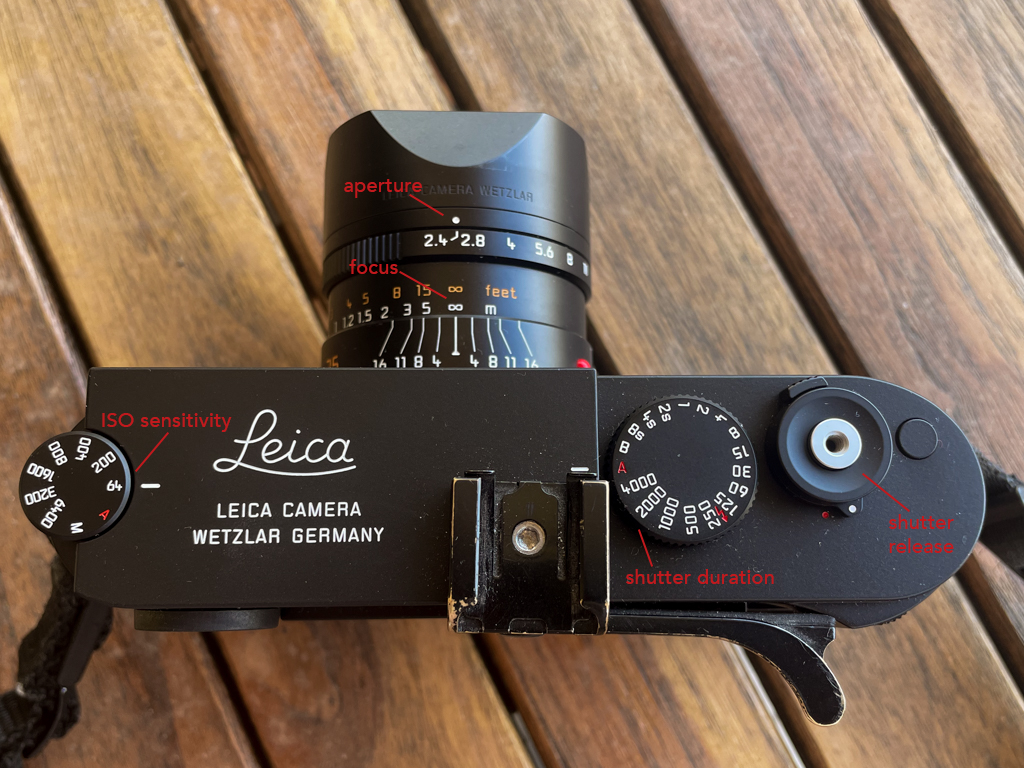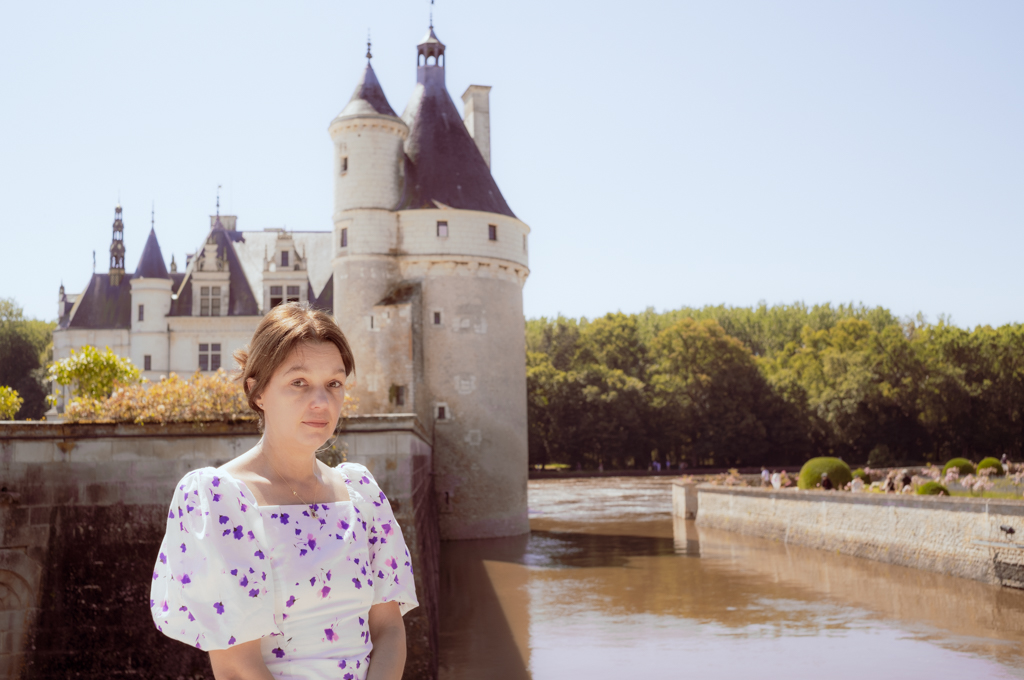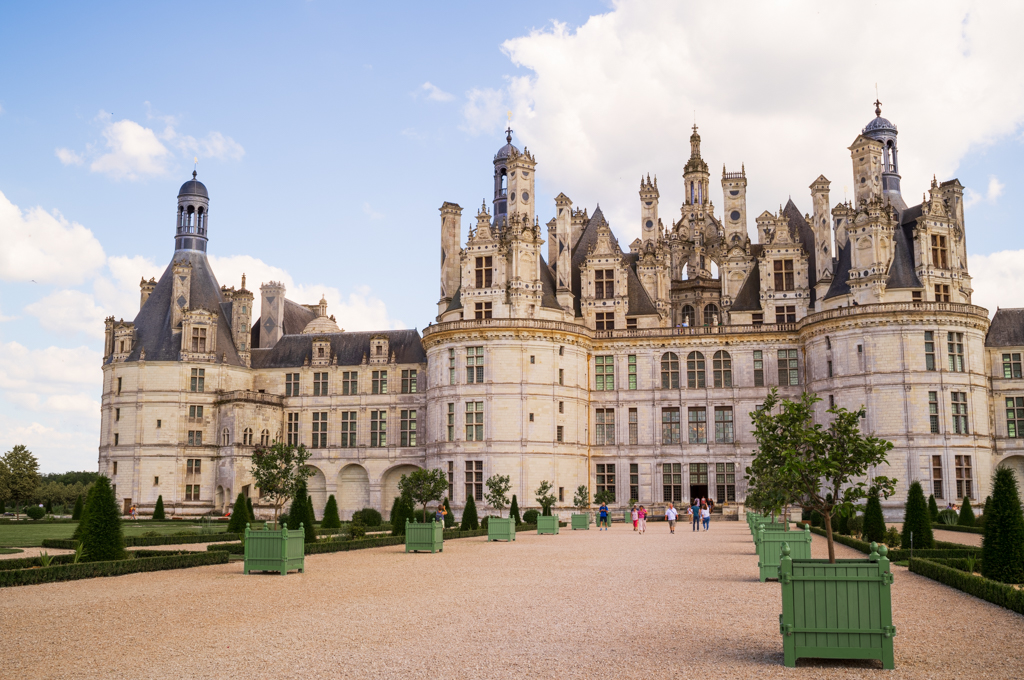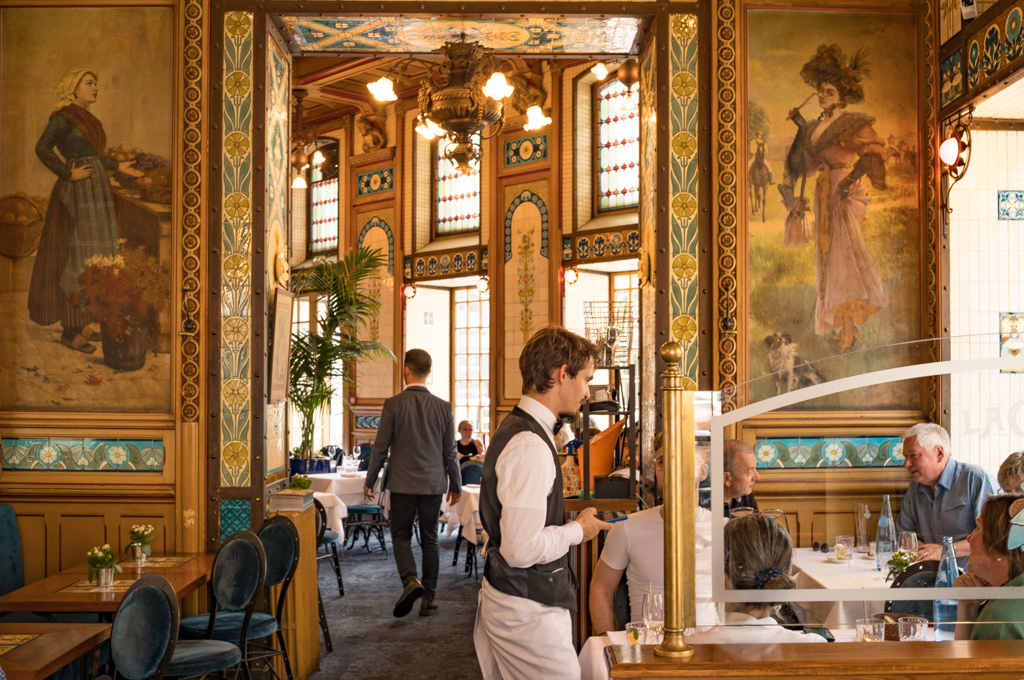New Camera, Old Feel: Leica M11-P¶
writer: russell j.t. dyer; posted: Jul 2024; revised: Jul 2024
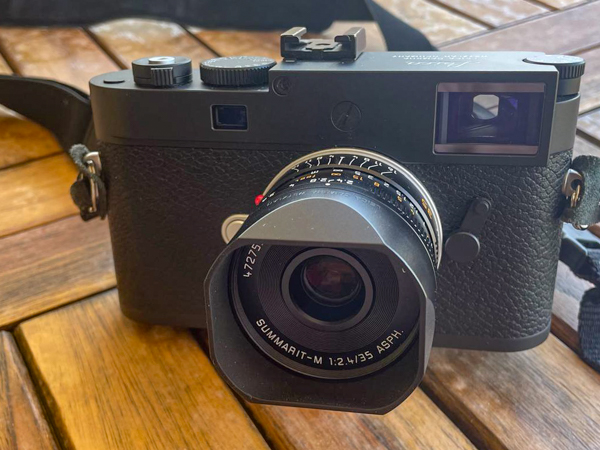
Leica M-11P camera with Leica Summarit-M f/2.4 35mm lens.

Plus, I attached a Match Tech. brass Thumbs Up for a firmer grip, and a more comfortable neck strap.
Over the past few years, I’ve gotten away from photography. I’ve been missing it and have been wanting something that would rejuvenate me. In my article on One Camera, One Lens, I discussed how I wanted to replace all of my cameras and lenses with a Leica M-D digital camera and a Leica lens — one with a 21mm or 35mm focal length.
Failed Attempts
At the time of that article, the price for the M-D was too expensive for me and it was scarce. Instead, I Bought a Leica Q, which I thought was close to what I wanted.
What I wanted, though, was a simple camera set up: a camera in which I could make changes easily and didn’t have a lot of distractions. I wanted manual controls for lens focus and aperture, shutter duration, and ISO sensitivity. The less I have to fiddle with the camera, the more I can concentrate on photographing. That wasn’t the Leica Q, I quickly learned. Although it was an excellent camera, it wasn’t a rangefinder. I primarily used the LCD live view for composing and focusing. It removed me too much from the creative process.
I sold the Leica Q and bought a Leica M6 film camera. The M6 had almost everything I wanted and nothing I didn’t want for making pictures. However, it wasn’t digital. Although I used to love my Zeiss Ikon, now I found getting film developed involved too much of a delay between creating and seeing the images. When you’re excited about photography, such things aren’t obstacles. But I was waning: I had the M6 for three years and used only a few rolls of film.
It wasn’t the camera’s fault: I had lost my passion for other reasons. Nevertheless, I wanted to try again to renew my interest in photography. So I decided recently to purchase a new camera, what I call in another article, A Digital Film Camera. At the time I wrote that article, I desperately wanted the M-D.
Something New
It’s been eight years since the Leica M-D was released and production ended. That’s old by digital camera standards. The Leica M10-D replaced it, which is already out of production. Barely used ones are listed on the web, but it has the same technology as the M-D. I prefer a camera with an image sensor at today’s standards. The Leica M11-D would do well, but may not be available for several months: its release has already been delayed twice. I didn’t want to wait that long.
Given all of this, a couple of weeks ago I bought a Leica M11-P, one of the latest M-series cameras available. It’s a rangefinder that uses M-mount lenses and has a 60-megapixel, full-frame image sensor. It does have an LCD, but I can turn that off by default.
The P in the name stands for Professional. These models are meant to be more professional than the standard models of their series. For the M11-P, there are a few differences from the M-11: the ability to tag photos using the Content Authenticity Initiative protocol, which I don’t need; 256 gigabytes of internal storage, which is great if I have problems with a memory card while shooting; a saphire surface to the LCD for protection against breakage; and no red logo on the front, but the name is engraved on the top, instead.
Exposure Controls
As I mentioned in other articles, there are three factors related to exposure: lens aperture; shutter duration, and ISO sensitivity. It’s similar to how wide your pupils are opened, for how long, and how sensitive are your retinas (i.e., are you human or a cat). There has to be a balance among them — or you’ll have an under or over exposed image.
Looking at the photo here of the top of the camera, you can see the controls I can set manually. I’ve annotated the image with red text, indicating all of the controls I use; I don’t use anything else to make a picture.
The dial to the right is for the shutter duration. Since I prefer to let the camera adjust that one based on how I set the other two exposure settings, I keep it on A. The knob on the left sets the sensitivity of the image sensor. When I’m outside, I put that on ISO 64. When inside, I might change it to ISO 200 — as much as ISO 400 if dimly lit. A much higher ISO can allow for shorter shutter durations and thereby solve camera shake problems, but it makes grainier images.
The lens aperture is set on the lens. This lens has a range from f/2.4 to f/16. I try to use 5.6 normally, but set it to 8 or 16 when outdoors in bright sunlight. When I’m indoors in dimmer light, I open it wider to 4 or even 2.4.
These settings may seem complicated. Let me say that again in a more succinct way. When I’m outside and about to start taking pictures, I turn the camera on and set it to ISO 64, leave the shutter on the red A, and set the lens to f/8. Then I walk around and look for things to photograph. I see something, point the camera, focus and click. After a while, I go inside and adjust: ISO 200; shutter still on A; lens aperture on 4 or lower. Then I look, point, focus, and click. It’s that simple. I don’t look at the LCD; I don’t change anything in the menus.
Initial Experiences
Just a few days before my wife Elena and I left for a week long trip in France, I bought the camera. I already had a 35mm lens that I bought four years ago with the Leica M6. It’s new and a nice one. Before the trip began, I spent a good bit of time reading through the manual, setting the camera to my default choices so I wouldn’t have to touch the menus once I started using it (see Configuring the Leica M11-P). I did some test shots to make sure I had everything right and remembered how to use a rangefinder camera — it’s been a while since I used one.
Once the trip began, I brought the camera with me wherever we went and took pictures. It was slugish at first and it took time to get comfortable with the camera. I avoided the LCD, but I was making mistakes and forgetting things. We’d be in a chateau where the lighting was very dim and then go outside. I’d forget to change the ISO from 400 to 64, or I’d forget to change the aperture from f/2.4 to f/16. I discovered later at the hotel when I loaded the images in Lightroom, that some were washed out, all white.
After my first day of disappointments, I made myself stop when the lighting circumstances around me changed, to check my exposure settings, before I considered taking any pictures. Yes, a few times I used the LCD to see an image when I was worried, but not many times, not every time — mostly to learn where I was going wrong and how to fix it. It took some effort, but the skills started coming back to me. The method and habits started becoming less forced, and looking at the LCD unnecessary. I wrote about this in another article, called Using Hand Tools.
Here a few pictures, some of my better ones (click on them to enlarge). They’re not great, but they’re a beginning. You can see in the first photo, the one of my wife, I forgot to change the aperture. The result is she’s looking pale. The other two are set properly — although I might have focused better on the third one and used a higher ISO.
Loire Valley, France
leica m11-p camera, leica summarit-m f/2.4 35mm lens
Next Steps
It feels good to be taking pictures again. The camera feels right and things are making sense again. I’m not where I once was when I was regularly using my Zeiss Ikon rangefinder and other cameras, but I’m getting there.
What I need to do is take photographs even when I’m not on vacation. Now that I’m back home, I want to start a Daily Photograph Project. I did that when I first bought a Leica digital camera, the M-8.2. I went out once a day and took thirty-six photos (i.e., the same amount as a roll of film) — trying not to take multiple shots of the same scene. I’d then go home and load the images in Adobe Lightroom to see how I did, what mistakes I made and what I did right. I’d choose the best photo for the day and post them on this site.
It was a struggle to get myself to go every day — it took at least an hour each time. First I was lazy, lethargic about going out every day. Then I was getting bored with the project: repetition is not my forte. Still, I went every day for a month. The result was that I learned the camera well and that I started using it, naturally and not by force or circumstances. It’s my plan to do the same with my new camera, and my hope to yield the same results.
